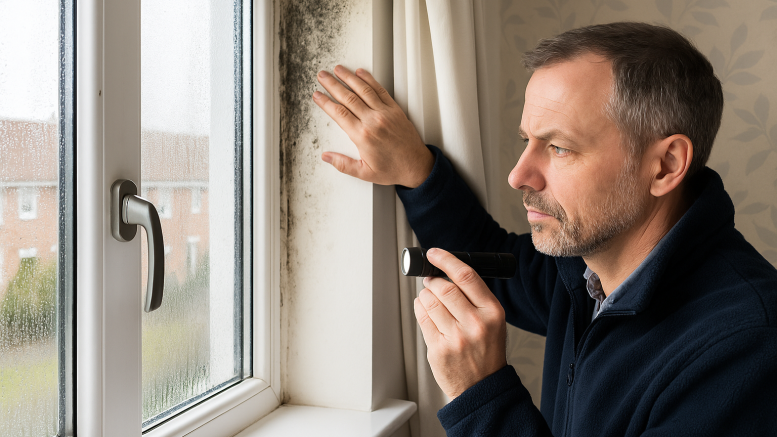From 27 October, Awaab’s Law will come into force, forcing social landlords to investigate and fix damp and mould within strict time limits. Similar rules for the private rented sector are close to approval under the Renters’ Rights Bill, creating new compliance pressures for landlords across England, Scotland, and Wales.
Landlords prepare for new legal standards on damp and mould
Named after two-year-old Awaab Ishak, who tragically died in 2020 due to prolonged exposure to mould in social housing, the new law aims to make property maintenance a public health priority. Under the legislation, social landlords will face enforcement action and potential legal proceedings if they fail to address damp or mould complaints within set deadlines.
Indoor air quality expert Noel Fok, co-founder of EcoAir, said the changes represent a major step forward: “Awaab’s death was a painful reminder of how deadly neglect can be. Up to 6.5 million UK households are affected by damp, with one in twenty in England suffering serious cases. The law ensures landlords act quickly to protect tenants from respiratory illnesses, allergies and in extreme cases, life-threatening infections.”
The Government’s Renters’ Rights Bill is expected to extend similar requirements to private landlords, many of whom already face tighter regulation and higher costs under the incoming tenancy reforms. According to the 2024 Government Landlord Survey, 26% of landlords report damp or mould in at least one of their properties.
Compliance challenges for private landlords under the Renters’ Rights Bill
The Renters’ Rights Bill, due to receive final approval soon, will make it a statutory duty for private landlords to address damp and mould as health hazards. It follows widespread concern that around one-third of private renters live with humidity or mould-related issues.
Landlords will be required to demonstrate that they’ve taken “reasonable and timely” action - something experts say could drive up maintenance costs but ultimately improve property standards and tenant relations.
Fok warned that landlords cannot afford to ignore air quality: “Airborne microorganisms thrive in humid conditions. Bacteria, viruses, and dust mites multiply rapidly when humidity rises above 60%. That’s when asthma, eczema, and respiratory issues worsen, and toxic mould can develop. Tackling moisture is key to preventing property damage and tenant illness.”
With the new rules, letting agents and landlords are being urged to conduct pre-winter inspections, fix leaking pipes, and install proper ventilation or dehumidifiers to avoid potential fines or legal disputes once the laws take effect.
Practical advice: identifying and reducing humidity in rental homes
Fok shared several tips for landlords and tenants to manage damp risks efficiently:
- Check for warning signs such as musty odours, discoloured patches, condensation on windows, or peeling paint.
- Monitor humidity with a hygrometer - ideal levels are between 40–60%.
- Ventilate daily, especially in bathrooms and kitchens. Use extractor fans when cooking or showering.
- Avoid drying clothes indoors, which can raise humidity levels sharply.
- Consider dehumidifiers, particularly desiccant models, which purify air while reducing moisture.
“Turning up the heating isn’t the answer,” Fok cautioned. “Warm air carries more moisture, and when it condenses on colder surfaces, you get damp patches and mould. It’s ventilation - not heat - that keeps homes dry and healthy.”
Editor’s view
For landlords, Awaab’s Law and the Renters’ Rights Bill underline a clear shift in government priorities - from affordability to habitability. While the new requirements add another layer of compliance, they also present an opportunity for professional landlords to differentiate themselves through quality, safety, and proactive management. The smart investor will see this not as regulation, but as reputation protection.
Author: Editorial team - UK landlord & buy-to-let news, policy, and finance.
Published: 22 October 2025
Sources: ONS, EcoAir, UK Government Landlord Survey, Renters’ Rights Bill, Awaab’s Law documentation
Related reading: Landlords urged to tackle damp and mould risks before winter sets in








